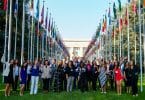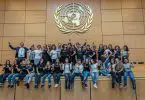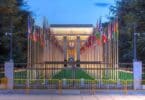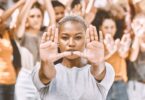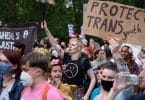written by Christopher Kuonqui from www.ImpactGrowthLab.com
Many within the human rights community hold a special passion for ending the fight against gender-based discrimination and to advance women’s and girls’ rights towards an inclusive and equitable world. When it comes to doing work in advancing women’s rights, four frameworks remain critical to understand.
- CEDAW
- Beijing Platform for Action
- Security Council resolution 1325 (2000)
- 2030 Agenda for Sustainable Development and the Sustainable Development Goals
Future efforts in women’s and girls’ rights within these frameworks include work to improve monitoring and to develop evidence-based, innovative ideas to hold governments accountable for their implementation.
Convention on the Elimination of Discrimination Against Women (CEDAW) (1979)
With 189 state parties, the Convention on the Elimination of Discrimination Against Women remains the hallmark reference point for women’s rights. It acknowledged the preeminence of discrimination as the driver of women’s exclusion across societies.
Organized under the auspices of the UN Office of the High Commissioner for Human Rights, the regular annual and milestone 5-year reviews and the General Recommendations that emerge from them are important sites for monitoring progress on women’s rights.
And the shadow civil society monitoring reports in multiple locations are equally as critical.
Many opportunities for detailing the state of progress on CEDAW articles regularly open up within human rights careers.
Beijing Platform for Action (1995)
Work to implement Beijing has waxed and waned in its history since adoption in 1995, but revisiting the tenets of debate in BPFA and the 12 Critical Areas of Concern will remind you of how forward-looking that moment in time was.
BPFA received new momentum in the seminal 20-year progress review and report, which in 2015 also formed the theme of the Commission on the Status of Women.
Women’s rights instruments based on the BPFA continue to be adopted at the regional-level in Asia-Pacific and in Africa.
Work here that remains is in the monitoring of progress, finding new agreements spanning government, civil society and increasingly private sector to spur action, and coordination of milestone events to note the status of the various agenda action points.
Security Council resolution 1325 (2000) on women, peace and security
ScR 1325 (2000) looks to support women’s rights during and in the aftermath of violent conflict. The four pillars of ScR 1325 (2000) include:
- Protection
- Prevention
- Participation
- Relief and recovery
National Action Plans have served as a key vehicle in translating this seminal framework for women’s and girls’ rights into country-based strategies.
Annual reports submitted to the UN Security Council produced under the auspices of the Secretary-General look to showcase priorities for UN and Member State action. UN Women produced a 2010 resource compendium of key instruments in 1325, updated a few years later. And 2015 saw the launch of a massive global study benchmarking progress and gaps since 2000—with multiple forward-looking and practical women’s rights in conflict instruments recommended.
A set of areas of work here include:
- The generation of results-based frameworks to monitor NAP implementation.
- Ensuring inclusion of women’s civil society and women’s rights organizations in the formulation and monitoring processes of NAPs priorities.
- Costing, budgeting and funding through implementation.
Recent resolutions underscore the real importance of identifying new ways to monitor challenges including sexual violence in conflict, governments slipping back on commitments, and to find key methods to track implementation of this resolution.
2030 Agenda and the Sustainable Development Goals (SDGs) (2015)
With the 2030 Agenda for Sustainable Development and the launch of the Sustainable Development Goals, women’s rights and the fight for gender equality has a renewed lease.
The 17 SDGs, 163 targets and 232 indicators (as of the latest update in December 2017) represent a large framework for inclusion and the advancement of the rights of all, including women and girls. Of the 232 indicators, for instance, a core list of 54 are recognized as essential to explicitly track implementation of women’s and girls’ rights and the elimination of barriers to gender equality.
SDG 5 to Achieve gender equality and empower all women is important as it reflects agreement to implement elements of the other three women’s rights frameworks we’ve reviewed here.
Yet it is critical to underscore that gender concerns are cross-cutting and interact with all the other dimensions of the SDGs, as the first Gender and SDGs Monitoring Report (2018) argues.
That the SDGs are a framework for gender equality, though, isn’t uncontroversial.
Many within the women’s rights community desired a more radical global framework in the SDGs that more effectively included human rights issues. While others note the progress from the Millennium Development Goals and remain cautiously optimistic. A 2016 Gender and Development journal special issue dedicated to gender and the SDGs provides an array of perspectives.
What’s fair to say is: it opens up new impact and career opportunities in women’s rights work.
Recent policy work on addressing women’s and girls’ unpaid care and domestic work shows what this means.
UN Women, UNRISD and others have taken significant stances on advancing reforms to change the status of the economically undervalued and unpaid care and domestic work women round the world provide. It’s often this unpaid care work, for children, the sick, elderly, and the household, that holds back women’s rights and the chances for more gender equality in a society. New ideas under the SDGs framework are emerging to advance social protection measures from paid maternity leave to state-funded childcare in many regions. This progress since 2015 is useful if incomplete.
New work in this area includes:
- Development of national systems to generate and use gender statistics to monitor progress in achieving the SDGs for all women and girls.
- Designing participatory systems for the better inclusion of women’s voices in national planning and the localization of the SDGs for women and girls.
- Creating cross-NGO collaboration to produce shadow reporting, citizen-generated data and the use of program data in SDG monitoring.
Future of women’s rights opportunities
These aren’t the only frameworks for women’s rights.
But when you look at the future of human rights career opportunities, where you can find jobs to help advance women’s and girls’ rights and support the fight against gender inequality, these are at least four key areas where opportunities are set to continue to emerge.


